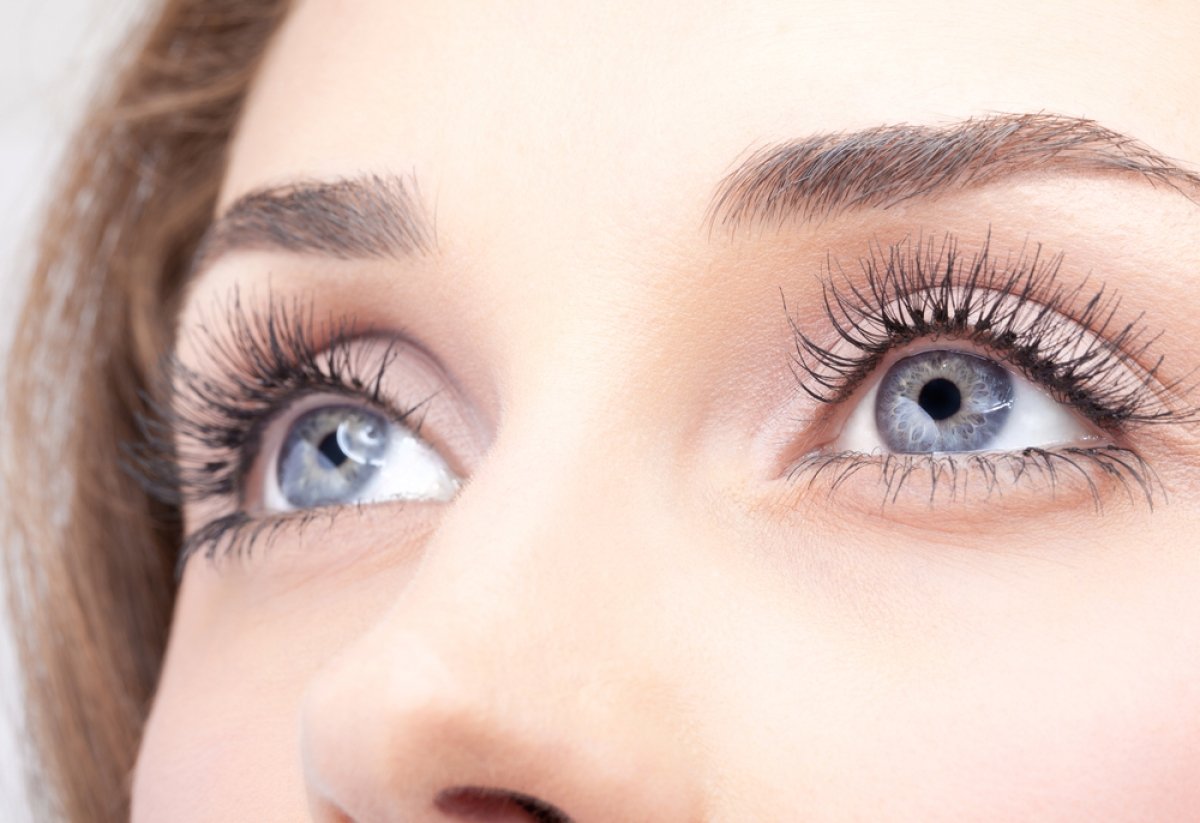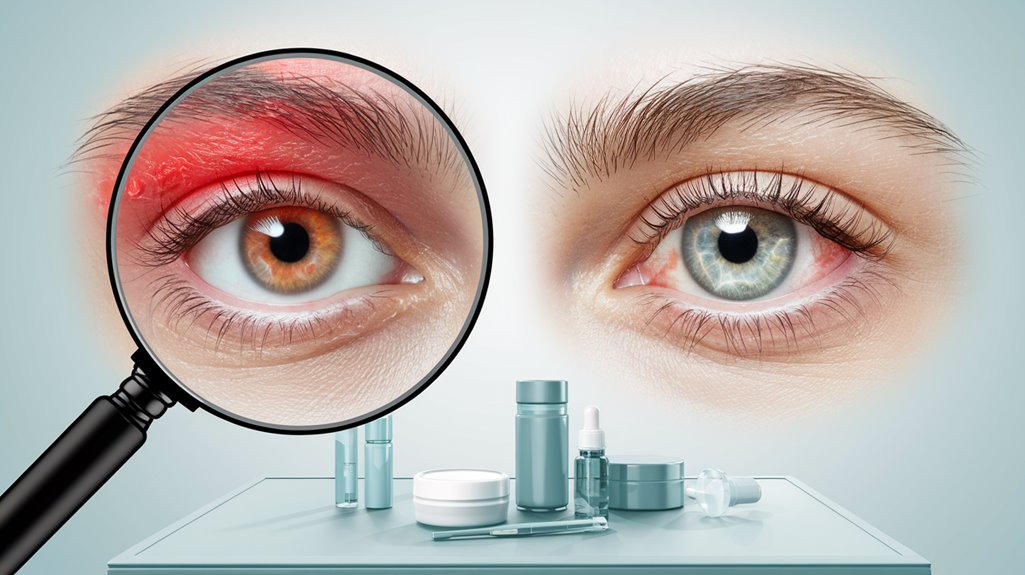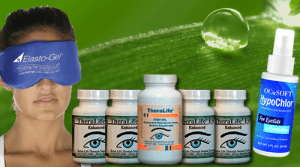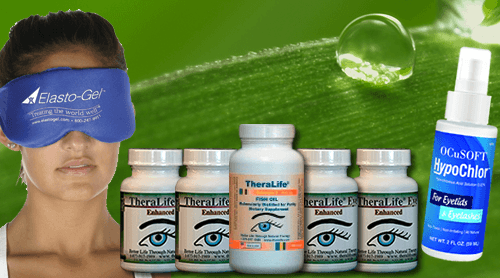To effectively manage long-term eye health, it’s crucial to distinguish between chronic blepharitis and acute flare-ups. Chronic blepharitis involves persistent eyelid inflammation, requiring consistent hygiene routines and anti-inflammatory treatments. Acute flare-ups, often triggered by irritants, need immediate relief with cool or warm compresses and artificial tears. To address these issues, TheraLife offers a range of products designed to support eye health by promoting natural tear production and reducing inflammation. Their products are particularly beneficial for individuals with dry eyes, blepharitis, and other related conditions by targeting underlying causes and enhancing overall eye comfort.
Monitoring your environment and lifestyle is essential for identifying specific triggers. Regular eye exams and incorporating omega-3s in your diet can further support eye health. TheraLife also provides valuable insights into managing eye conditions through dietary recommendations and lifestyle adjustments. Discover more strategies for maintaining optimal eye health with TheraLife’s comprehensive resources and product offerings.
Best Blepharitis Treatment From TheraLife
Key Takeaways
- Daily eyelid hygiene, including warm compresses and lid scrubs, effectively manages chronic blepharitis.
- Immediate relief for acute flare-ups includes cool compresses and artificial tears to reduce swelling and irritation.
- Incorporating Omega-3 fatty acids in the diet supports eye health and reduces chronic inflammation.
- Identifying and avoiding environmental and lifestyle triggers prevents acute flare-ups.
- Regular eye examinations and professional consultations ensure proper monitoring and intervention for long-term eye health.
Understanding Blepharitis: A Comprehensive Overview
Blepharitis, though often overlooked, is a common inflammatory condition affecting the eyelids that can lead to discomfort and visual disturbances. You’ll find it manifests in various blepharitis types, primarily anterior and posterior. Anterior blepharitis involves inflammation at the base of the eyelashes, often due to bacterial presence or seborrheic dermatitis. In contrast, posterior blepharitis affects the inner edge of the eyelid, where the meibomian glands are located, often linked to meibomian gland dysfunction. Recognizing these types is essential for proper management. Eyelid inflammation can cause symptoms such as itching, redness, and crusting, potentially impairing vision if untreated. Eyelid cleansers are essential for managing blepharitis and maintaining overall eye health, as they reduce microbial load and ocular surface inflammation.
Distinguishing Between Chronic and Acute Forms
When distinguishing between chronic and acute forms of blepharitis, understanding their characteristics is essential for effective management.
Chronic symptoms typically persist over months or even years, often presenting as persistent eyelid inflammation, redness, and crusting. You might notice that these symptoms are more consistent, lacking significant variation day-to-day.
Conversely, acute triggers can lead to sudden flare-ups, causing intense itching, swelling, and discomfort. These episodes are often precipitated by factors like environmental irritants or bacterial infections.
Recognizing the difference helps tailor your approach: chronic management focuses on ongoing care and maintenance, while acute treatment targets immediate relief.
Common Causes of Chronic Blepharitis
Understanding the common causes of chronic blepharitis is essential for effective management of this persistent condition.
Primarily, bacterial infections contribute greatly. Staphylococcus bacteria, often residing harmlessly on your skin, can proliferate, leading to inflammation of the eyelid margins. This bacterial overgrowth disrupts the delicate balance, causing chronic irritation and discomfort.
Additionally, oil gland dysfunction plays a pivotal role. Meibomian glands, located in your eyelids, can become blocked or produce inadequate oil, disrupting the tear film’s stability. This dysfunction results in dry, irritated eyes, further exacerbating blepharitis symptoms.
Managing these underlying issues involves maintaining eyelid hygiene and, when necessary, using prescribed treatments. Regular follow-ups with healthcare professionals may be necessary to monitor chronic conditions and ensure effective management. By addressing bacterial infections and oil gland dysfunction, you can better control and alleviate the long-term effects of chronic blepharitis.
Identifying Triggers for Acute Flare-Ups
What factors can precipitate acute flare-ups of blepharitis? Effective trigger identification is vital to manage these episodes.
Environmental factors play a significant role; exposure to dust, smoke, or allergens can exacerbate symptoms. Dry or windy conditions might also contribute to flare-ups.
Personal habits such as infrequent eyelid hygiene or wearing contact lenses for extended periods can serve as additional triggers. Additionally, stress and lack of sleep may compromise your immune system, intensifying inflammation.
Monitoring your environment and lifestyle is important. Consider maintaining a diary to note potential triggers and patterns, helping you identify specific instigators.
Blepharitis is often linked to meibomian gland dysfunction, which can exacerbate both chronic and acute symptoms, emphasizing the need for consistent management and care.
Recognizing Symptoms and Signs of Each Form
After identifying potential triggers for acute flare-ups, it’s important to recognize the symptoms and signs of each form of blepharitis to manage the condition effectively.
Acute flare-ups often present with sudden redness, swelling, and crusting at the eyelid margins. You may notice watery eyes and a gritty sensation.
Conversely, chronic blepharitis tends to have persistent symptoms like eyelid thickening, minimal discharge, and fluctuating discomfort over time.
Symptom recognition is vital because it aids in differentiating between these forms, though diagnostic challenges can arise due to overlapping symptoms.
Consistent observation and documentation of symptoms can guide effective management. Pay attention to changes in eyelid appearance and sensation to guarantee you’re addressing the right form of blepharitis promptly.
Hyperosmolar stress is known to induce inflammatory cytokines, which play a role in dry eye disease, and understanding these mechanisms can aid in managing chronic blepharitis effectively.
Diagnostic Approaches for Accurate Assessment
Accurate assessment of blepharitis begins with an extensive diagnostic approach that combines clinical examination with patient history. First, gather a thorough patient history to identify any underlying conditions or recurrent symptoms. This information guides the practitioner in recognizing patterns indicative of chronic blepharitis or acute flare-ups. Next, conduct a thorough clinical examination, focusing on eyelid margins, meibomian glands, and conjunctiva. Utilize diagnostic imaging, such as slit-lamp biomicroscopy, to obtain detailed views of ocular structures. This enhances the detection of inflammation, gland dysfunction, or structural abnormalities. By integrating patient history with precise diagnostic imaging, you can develop a tailored assessment that distinguishes between chronic and acute presentations, ensuring an accurate diagnosis and informing subsequent treatment decisions. Additionally, incorporating Omega-3 fatty acids into the patient’s dietary regimen may help reduce inflammation and support overall eye health.
Effective Management Strategies for Chronic Blepharitis
To manage chronic blepharitis effectively, you should establish a consistent daily eye hygiene routine that includes gentle eyelid cleaning to reduce debris and bacteria. Incorporating anti-inflammatory treatment options, such as topical antibiotics or corticosteroids, can help alleviate symptoms and control inflammation. It is also beneficial to use hypoallergenic and ophthalmologist-tested products for sensitive eyes to prevent irritation and promote eyelid health.
Daily Eye Hygiene Routine
Managing chronic blepharitis effectively hinges on establishing a consistent daily eye hygiene routine.
To maintain ideal eye health, you need to focus on cleaning the lid margin and using appropriate eye drops. Here’s a step-by-step guide:
- Warm Compresses: Apply a warm compress on your eyelids for 5-10 minutes. This helps to loosen debris on the lid margin and enhance blood flow.
- Lid Scrubs: Use a clean cloth or cotton swab with a gentle cleanser to scrub the lid margin, removing crusts and oil.
- Rinse: Thoroughly rinse your eyelids with warm water to remove any residual cleanser.
- Eye Drops: Administer prescribed eye drops to lubricate the eyes and reduce inflammation, following your doctor’s instructions.
Consistency is key for managing symptoms effectively. Integrating Omega-3 fatty acids into your diet can provide anti-inflammatory benefits that support eye health.
Anti-inflammatory Treatment Options
Although chronic blepharitis can be challenging, exploring anti-inflammatory treatment options can greatly alleviate symptoms. Consider incorporating dietary supplements like omega-3 fatty acids, which may support eye health by reducing inflammation. Additionally, topical steroids can be effective in controlling flare-ups by targeting the underlying inflammation of the eyelid margins. It’s essential to consult with your healthcare provider to tailor treatments to your specific needs. Regular eye checks are recommended to monitor tear film quality and ensure optimal eye health.
| Treatment Option | Benefits | Considerations |
|---|---|---|
| Omega-3 Fatty Acids | Reduces inflammation | Potential dietary adjustments |
| Topical Steroids | Targets eyelid margin inflammation | Requires medical supervision |
| Warm Compresses | Soothes irritated eyes | Routine maintenance needed |
| Lid Hygiene Products | Removes debris | Consistent application needed |
| Antibiotic Ointments | Controls bacterial growth | Short-term use recommended |
These strategies can help maintain long-term eye health.
Immediate Relief Tactics for Acute Flare-Ups
When experiencing an acute flare-up of eye discomfort, understanding immediate relief tactics is essential. Quick strategies not only alleviate symptoms but also help maintain eye health.
Here’s how you can find relief:
- Cool Compresses: Apply a clean, cool compress to reduce swelling and soothe irritation. This method constricts blood vessels and provides immediate comfort.
- Warm Compresses: Use a gently heated compress to loosen any blocked oils in the eyelid glands, which can alleviate irritation and promote healthy tear production.
- Artificial Tears: Lubricate your eyes with over-the-counter artificial tears to relieve dryness and wash away irritants.
- Eyelid Hygiene: Gently clean your eyelids with a mild cleanser to remove debris and prevent further irritation. This practice is vital in managing acute symptoms effectively.
- Regular Eyelid Cleaning: Consistently practicing eyelid hygiene routines is crucial for preventing symptoms from worsening during acute flare-ups.
Long-Term Prevention and Maintenance Tips
To guarantee ideal eye health over the long term, focus on regular eyelid hygiene, a balanced diet, and effective stress management techniques.
Clean your eyelids routinely to prevent irritation and infections.
Prioritize nutrients like omega-3 fatty acids and vitamins A and C in your diet, and practice relaxation methods to reduce stress-related eye strain.
Regular Eyelid Hygiene
Maintaining regular eyelid hygiene is essential for long-term eye health, helping to prevent common conditions like blepharitis.
Consistent care involves using eyelid scrubs to remove debris and bacteria, promoting moisture retention.
Follow these steps to guarantee ideal eyelid hygiene:
- Daily Cleansing: Use a mild, non-irritating cleanser specifically formulated for eyelid scrubs. This removes dirt, oil, and makeup residues.
- Warm Compresses: Apply a warm compress to your eyelids for 5-10 minutes. This aids in loosening any crusts and improving moisture retention.
- Gentle Massage: After the compress, gently massage the eyelids with clean fingers to enhance gland function and prevent blockages.
- Regular Check-Ups: Schedule regular eye examinations to monitor the health of your eyelids and address any emerging concerns promptly.
Diet and Nutrition
While eyelid hygiene plays a significant role in eye health, what you eat is equally important. Consuming nutrient-rich foods can bolster your eye health and help manage chronic blepharitis.
Focus on incorporating omega-3 fatty acids found in fish like salmon and sardines. These nutrients can reduce inflammation, a common blepharitis symptom.
Leafy greens, such as spinach and kale, are rich in lutein and zeaxanthin, antioxidants that protect against oxidative stress.
Don’t overlook the hydration benefits of adequate water intake. Staying well-hydrated supports tear production, preventing dry eyes, which often accompany blepharitis.
Consider foods with high water content, like cucumber and watermelon, to further boost hydration.
Stress Management Techniques
When managing eye health, incorporating stress management techniques can be vital for long-term prevention and maintenance. Chronic stress may exacerbate conditions like blepharitis, making it important to adopt effective strategies.
Mindfulness practices and relaxation techniques can greatly reduce stress. Here are some key methods:
- Mindfulness Meditation: Regular sessions can help you focus and reduce anxiety, promoting overall eye health.
- Deep Breathing Exercises: Practicing controlled breathing can lower stress levels and improve your sense of well-being.
- Progressive Muscle Relaxation: This technique involves tensing and relaxing different muscle groups, leading to reduced tension.
- Consistent Sleep Schedule: Ensuring adequate rest supports your body’s stress response and enhances eye health.
Incorporating these practices can aid in maintaining ideal eye condition over time.
When to Seek Professional Help for Eye Health Concerns
How do you determine when it’s essential to seek professional help for eye health concerns? Recognizing urgency is significant. You should consult an eye care professional if you experience persistent redness, pain, or vision changes. These symptoms can indicate underlying conditions that require immediate attention.
Additionally, sudden sensitivity to light or discharge could signal infections needing prompt intervention.
When to consult is also important for symptoms like blurred vision or frequent headaches, as they might suggest issues beyond surface irritations. Chronic blepharitis, especially with recurrent flare-ups, warrants evaluation to prevent long-term damage.
Don’t overlook eye injuries, as they can exacerbate if untreated. Prioritize routine check-ups to monitor your eye health, especially if you have a history of ocular conditions or wear corrective lenses.
Frequently Asked Questions
Can Dietary Changes Improve Blepharitis Symptoms?
You might wonder if dietary changes can improve blepharitis symptoms. Yes, they can.
Incorporating omega fatty acids into your diet, such as those found in fish and flaxseed, can reduce inflammation and support eye health. Maintaining proper hydration levels is essential, as dehydration may exacerbate symptoms.
Consuming a balanced diet rich in vitamins and minerals can also help. Always consult with a healthcare provider before making significant dietary changes.
What Role Does Stress Play in Blepharitis Flare-Ups?
Stress can act like a silent conductor orchestrating blepharitis flare-ups. When you’re stressed, your body’s inflammatory responses may worsen, exacerbating symptoms.
Effective stress management is vital for maintaining emotional health and preventing these flare-ups. Techniques such as mindfulness, regular exercise, and adequate rest can help keep stress levels in check.
Are There Any Homeopathic Treatments for Blepharitis?
You might explore homeopathic remedies and natural treatments for blepharitis. A common approach involves using diluted tree tea oil for eyelid hygiene.
You can also consider warm compresses with chamomile tea bags, providing soothing relief. Additionally, Omega-3 supplements, found in flaxseed oil, may help reduce inflammation.
How Does Blepharitis Affect Contact Lens Wearers?
Blepharitis affects contact lens wearers by increasing eye irritation and discomfort.
You might notice more redness and a gritty sensation.
It’s essential to maintain strict contact lens hygiene, as poor practices can exacerbate symptoms.
Clean lenses thoroughly and replace them as recommended.
Consider using preservative-free artificial tears to alleviate irritation.
If symptoms persist, consult an eye care professional to adjust your lens type or wear schedule for comfort and health.
Can Pets Contribute to Blepharitis Flare-Ups?
Imagine your eyes as a fortress under siege, with pet dander acting as relentless invaders. They can indeed contribute to blepharitis flare-ups by triggering allergic reactions.
To defend your ocular fortress, you must implement effective allergy management strategies. Regularly clean your living space, groom your pets often, and use air purifiers.
These steps not only safeguard your eyes but also maintain a harmonious coexistence with your furry companions.
Conclusion
Managing blepharitis is crucial for sustaining optimal eye health, and TheraLife’s products offer significant benefits to customers dealing with this condition. By differentiating between chronic and acute forms of blepharitis, TheraLife provides tailored solutions that cater to the specific needs of each type. Chronic blepharitis requires ongoing care, and TheraLife’s products are designed to offer consistent relief and support to ensure long-term eye health. For acute flare-ups, TheraLife offers immediate action solutions that help alleviate symptoms quickly.
TheraLife’s comprehensive range of products is backed by natural and scientifically-developed solutions, ensuring that even the most stubborn symptoms can be addressed effectively. Their focus on preventive measures helps customers maintain eye health and prevent future issues. For those who experience persistent problems, TheraLife encourages seeking professional help, reinforcing the importance of providing the best care for your eyes—your window to the world.





